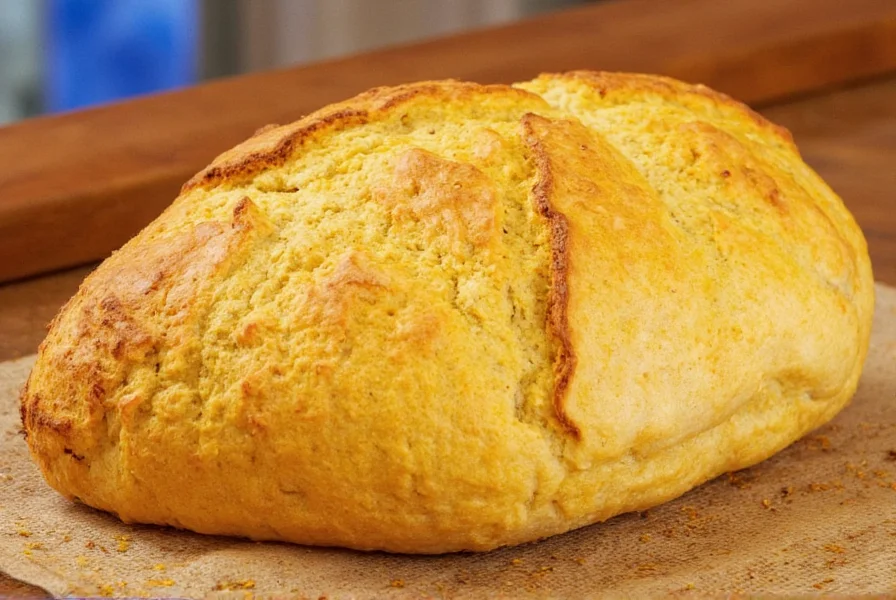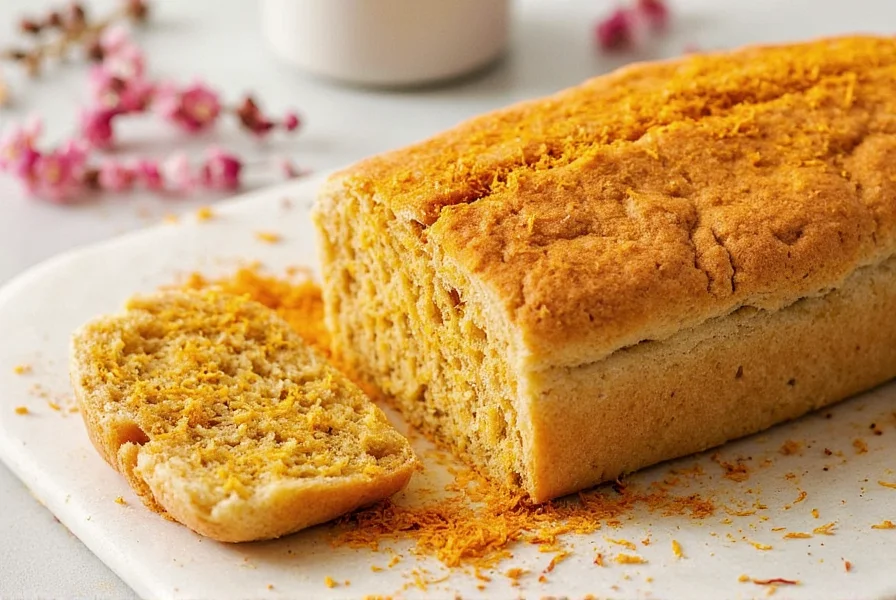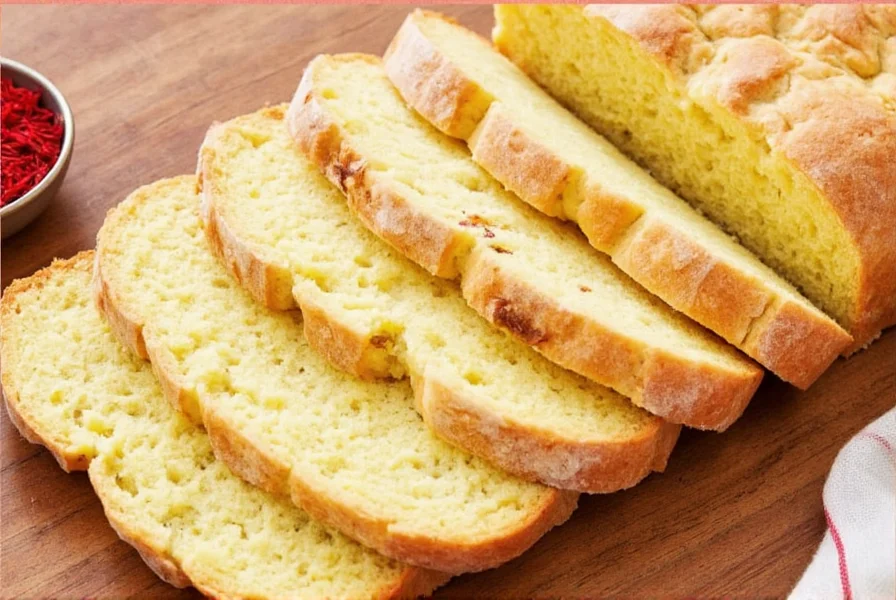Saffron bread represents one of the world's most luxurious baked traditions, dating back centuries to when saffron was traded along ancient spice routes. The precious crocus sativus stigma imparts not only its characteristic golden hue but also a complex flavor profile that transforms simple bread into something extraordinary. While the high cost of genuine saffron makes this bread a special occasion treat, its cultural importance across multiple civilizations has ensured its survival through generations.
The Historical Journey of Saffron Bread
Saffron cultivation began in Bronze Age Greece, but the practice of incorporating it into bread spread as trade routes expanded. Persian bakers were among the first to develop saffron-infused breads around the 3rd century BCE, using the precious spice to demonstrate wealth and hospitality. By the Middle Ages, saffron bread had reached Scandinavia via Viking trade routes, where it evolved into the beloved Swedish Lussekatter (saffron buns) traditionally baked for Saint Lucia's Day on December 13th.
The spice's journey to Spain occurred through Moorish influence, resulting in unique regional variations like the Spanish pan de azafrán. Each culture adapted saffron bread to local ingredients and traditions, creating distinct preparations while maintaining the essential golden color and delicate floral notes that define this specialty bread.
Essential Ingredients and Their Roles
The magic of authentic saffron bread comes from just a few key components working in harmony:
| Ingredient | Function in Saffron Bread | Traditional Proportions |
|---|---|---|
| Saffron threads | Provides color, flavor, and aroma | 0.1-0.5g per loaf (varies by region) |
| Warm liquid | Releases saffron compounds | 2-4 tbsp for steeping saffron |
| Wheat flour | Structure and texture | 500g for standard loaf |
| Butter or dairy | Richness and tender crumb | 50-100g depending on recipe |
| Eggs | Binding and color enhancement | 1-2 per standard loaf |
The preparation method significantly impacts the final product. Authentic saffron bread requires steeping the threads in warm liquid (milk, water, or broth) for at least 20 minutes to fully extract the color and flavor compounds before incorporating them into the dough. This technique maximizes the precious spice's impact while minimizing waste—a crucial consideration given saffron's status as the world's most expensive spice by weight.

Global Variations of Saffron Bread
Saffron bread manifests differently across cultures, each variation telling a story of local adaptation:
- Swedish Lussekatter - Rich, saffron-infused buns shaped like an 'S' with raisins, traditionally served on Saint Lucia's Day. The Swedish version typically uses more saffron than other traditions, creating a vibrant yellow color.
- Persian Taftoon-e Za'faran - A flatter, crispier bread often prepared for special occasions, sometimes incorporating cardamom alongside saffron for additional complexity.
- Spanish Pan de Azafrán - Typically a sweet bread from Valencia region, often enjoyed during Easter celebrations with a softer texture than its Scandinavian counterpart.
- English Saffron Cake - Though technically a cake, this Cornish specialty represents Britain's historical connection to saffron trade, featuring a dense, moist texture with generous saffron infusion.
Mastering Saffron Bread Preparation
Creating exceptional saffron bread requires attention to several critical factors:
Saffron quality matters most - Genuine saffron threads (not powder) provide superior flavor and color. Look for deep red threads with minimal yellow style to ensure potency. A simple test: place a thread in warm water—if the water turns deep yellow within minutes, you have quality saffron.
Temperature control is crucial during preparation. Saffron's delicate compounds degrade above 185°F (85°C), so always steep threads in liquid below this temperature. Similarly, yeast-based doughs should be proofed at moderate temperatures (75-80°F/24-27°C) to prevent killing the yeast while allowing proper fermentation.
Dough hydration affects texture significantly. Scandinavian saffron breads typically have higher fat and egg content, resulting in a richer, softer crumb, while Middle Eastern versions often feature leaner doughs with crispier crusts. Adjust liquid content based on your flour's absorption rate and desired texture.

Serving Traditions and Pairing Suggestions
Saffron bread carries deep cultural significance in many societies, often reserved for special occasions:
In Sweden, Lussekatter are central to the December 13th Saint Lucia celebrations, symbolizing light during the darkest time of year. Families gather to serve these saffron buns with ginger tea and butter, continuing a tradition that dates back to the 1920s. Iranian households might prepare saffron bread for Nowruz (Persian New Year), while Spanish communities enjoy their pan de azafrán during Easter festivities.
For optimal enjoyment, serve saffron bread slightly warm. Traditional pairings include:
- Scandinavian style: With softened butter and ginger tea
- Middle Eastern presentation: Alongside feta cheese and olives
- Spanish tradition: With a glass of sweet sherry or moscatel wine
- Modern interpretation: As a base for smoked salmon canapés
When storing saffron bread, keep it in an airtight container at room temperature for up to three days. For longer preservation, freeze slices individually wrapped in parchment paper, then place in a freezer bag. Properly stored, it maintains quality for up to three months. Never refrigerate bread, as this accelerates staling.
Frequently Asked Questions
What gives saffron bread its distinctive yellow color?
Saffron bread gets its vibrant yellow-orange color from crocin, a carotenoid pigment found in saffron threads. Just a small amount (0.1-0.5 grams per loaf) creates the characteristic golden hue. The color intensifies when saffron is properly steeped in warm liquid before incorporation into the dough.
Why is saffron bread so expensive to make at home?
Saffron is the world's most expensive spice by weight, requiring approximately 75,000 crocus flowers to produce just one pound of dried saffron threads. The labor-intensive harvesting process (each flower must be hand-picked and the stigmas carefully removed) contributes to the high cost. A single loaf typically requires 0.1-0.5 grams of saffron, which can cost $1-5 depending on quality.
Can I substitute saffron with turmeric in bread recipes?
While turmeric provides a similar yellow color, it cannot replicate saffron's distinctive floral, honey-like flavor with subtle earthy notes. Turmeric has a stronger, more bitter taste that significantly alters the bread's profile. For authentic saffron bread, genuine saffron threads are essential. Some bakers use a tiny pinch of turmeric alongside reduced saffron to enhance color while maintaining flavor integrity, but this remains a compromise.
How should I store saffron to maintain its potency for bread making?
Store saffron threads in an airtight container away from light, heat, and moisture. A dark cupboard or refrigerator works well. Properly stored, saffron maintains its flavor and color potency for 2-3 years. Never store saffron in plastic bags, as the threads can absorb unwanted flavors. For best results in bread making, use threads within 18 months of purchase and always steep them in warm liquid before incorporating into dough to maximize flavor extraction.











 浙公网安备
33010002000092号
浙公网安备
33010002000092号 浙B2-20120091-4
浙B2-20120091-4